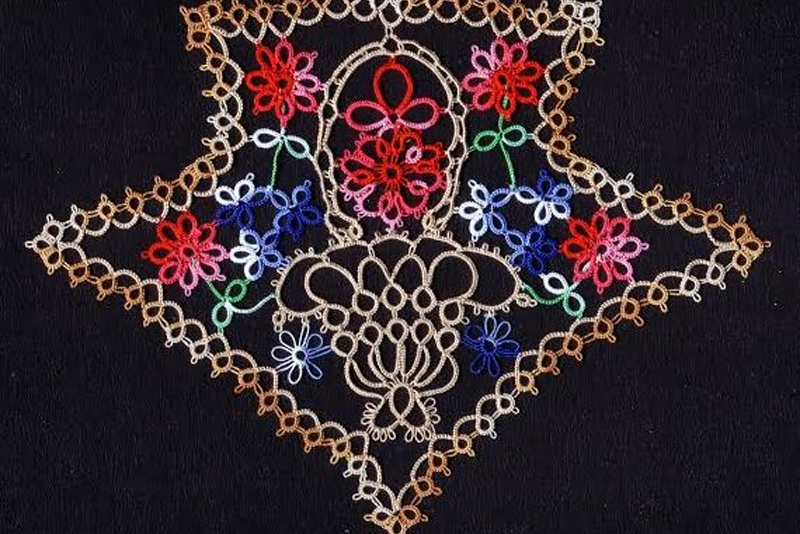Roll Tatting Tutorial

Roll tatting is a novelty stitch found in many vintage pubs and explained also in more recent publications like Rebecca Jones' "The Complete Book of Tatting" and the tatting books of Mary Konior.
The roll stitch in tatting is not a stitch at all. It is only the thread from the shuttle being literally rolled around the ring thread and compressed back to the starting point. Begin the ring with a regular double stitch (DS.) Next take the shuttle and pass it under the working thread (ring thread) and over to the right and keep the shuttle thread straight. The loop does not flip or transfer. An half stitch is NOT formed.

It is necessary to frequently compress the rolls. Use finger tip or nail to slide the rolls down on the ring thread. If you ease up on the tension then the rolls will unwrap.
Continue bringing the shuttle under the ring thread and tightening the rolls back for the length needed. To create a picot, compress the rolls tightly and roll the last little bit between the fingers to get rid of slack. Tat a regular DS picot DS. Then return to the rolling of the thread. Finish the ring with a regular DS and close. It helps to prevent the initial and last DS from rolling around if you post the shuttle thread through the ring before closing.

Although I choose not to let go of the shuttle when I tat, there is another alternative to the "slip and slide" method I use. The tatter may take the shuttle and actually drop it down the center of the ring, do not flip or transfer the stitch, grasp the shuttle again and take it round the outside of the left hand and drop it down the middle again.

Here is a vintage explanation of roll tatting. It was published in Needlecraft Magazine May 1917. The instructions were written by Mrs. B. M. J. of New Hampshire.

You Should Also Read:
Roll Tatting Round Medallion
Building a Tatting Library - Standards

Related Articles
Editor's Picks Articles
Top Ten Articles
Previous Features
Site Map
Content copyright © 2023 by Georgia Seitz. All rights reserved.
This content was written by Georgia Seitz. If you wish to use this content in any manner, you need written permission. Contact Georgia Seitz for details.






